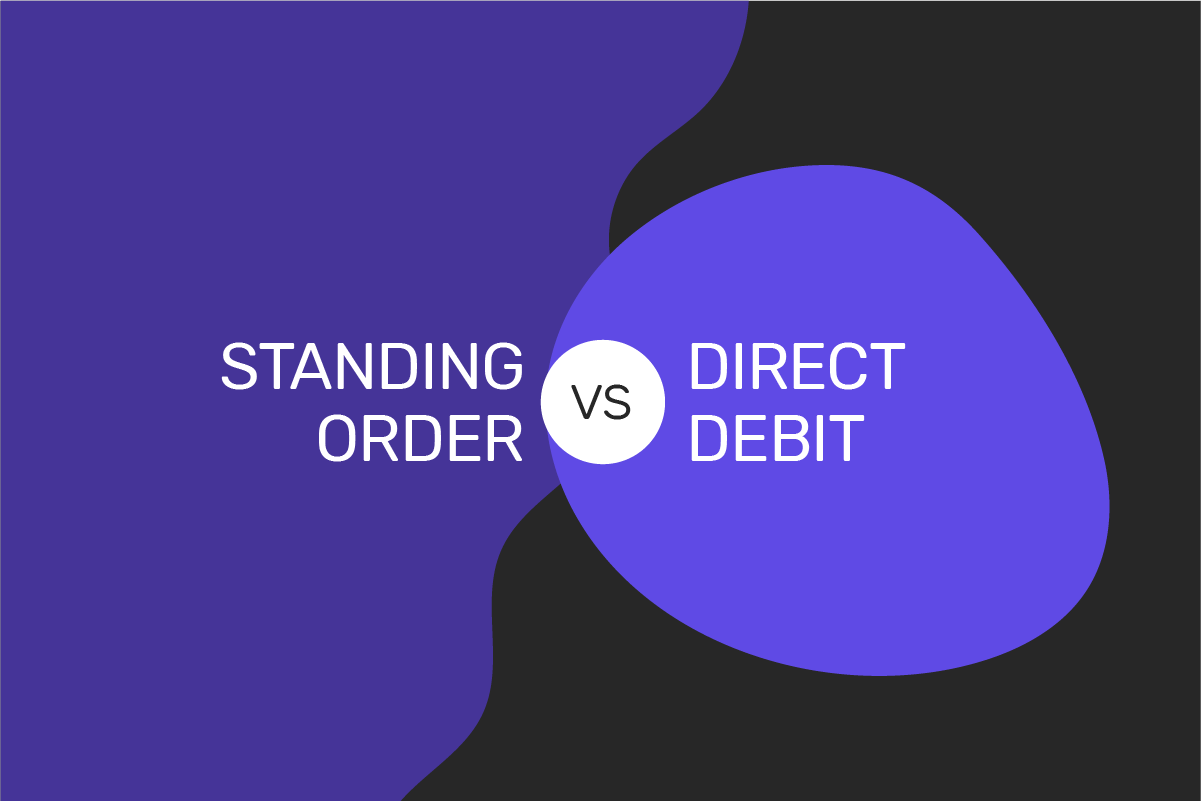The article was updated on 09.01.2025
Understanding the difference between standing order vs. direct debit is crucial when considering how to operate your bank account.
These are two similar types of transactions but with important differences that make them both useful in a variety of circumstances.
Introduction to automated payments
Automated payments offer a way of making it easier to manage your personal and business banking responsibilities. They allow people to pay the right amounts regularly instead of having to remember to make or receive the payment each month or week.
Standing order and direct debit transactions are the most common automatic payment methods. While they work differently, they both give you a sense of security because you’re not going to miss making any important transfers on time.
What is a standing order?
A standing order is a type of recurring payment in which the account holder has to choose the amount and frequency. As the account holder, you tell your bank when you want to make payments, for how much, and to whom. By adding an end date, you have complete control over the process and can also choose to end standing orders at any time.
A standing order is a popular way of making fixed payments to landlords, family members, and other transfers where the amount never changes. Since a standing order is for a fixed amount, it’s not as useful for bills whose amounts change each month. It’s easy to set up a standing order online and then cancel it at any point.
Open an account
in Genome online
What is a direct debit?
Direct debits are set up by the company or organization taking the funds following authorization. The account holder needs to sign a direct debit mandate confirming that they’re happy for the direct debit provider to carry out these transactions by taking money from the account.
Unlike standing orders, direct debits can be variable amounts. This makes them more suitable for certain types of payments, such as mortgages and other bills that aren’t always the same amount. The customer can cancel a direct debit at any time but should speak to the company taking the payment before doing this. Any incorrect payment taken is covered under the Direct Debit Guarantee scheme, which protects customers.
Comparing standing orders and direct debits
These two kinds of regular payments are vital parts of the banking industry, but by taking a closer look, we can better understand why both are useful in different ways.
Control and flexibility
The first point to consider is the level of control given by each of these ways of making a regular payment. A standing order allows the account holder to set up the payment schedule in a way that suits them. However, if the amount of money varies regularly, it might prove more time-consuming in terms of having to make amendments each time.
With the direct debit system, the company taking regular payments from accounts is responsible for collecting the right payment amount. This gives them more control over the direct debit process and removes the need for the account holder to carry out further actions unless they spot an error.
Cost and efficiency
Setting up a standing order from a building society or bank account is free and easy to do. For the company looking to collect payments, a standing order isn’t as efficient as direct debits, since they have no control over the process and need to check to see what payments are received each day. In addition, there is no automatic report letting them know a standing order payment date has been missed.
Direct debits are free from the customer’s point of view but have a small cost for the business taking them. It’s easy for businesses to collect numerous payments quickly in this way, with automatic reports letting them know if a direct debit payment on a scheduled date has been missed.
Usage scenarios
There are numerous situations in which businesses collect money directly from a customer’s bank account. In other cases, an account holder might need to find the best way to start paying bills with a degree of flexibility.
Gym memberships are generally best paid by direct debit, as this gives a flexible way to change the transaction amount if needed and spot any missed payments. A smaller gym with few people making regular payments may be comfortable if they pay using the standing order process.
Loan and mortgage repayments are typically taken by direct debit from a current account. This lets the lender stay in control and see if there are any missed or late payments on each due date.
Rent payments are often made using a standing order since the amount doesn’t change from month to month. A landlord with many tenants may prefer direct debit payments to decrease their administrative burden.
Utility bills are best set up to leave a bank account using direct debit since the payment amount will vary monthly by month. This makes paying bills easier for customers and gives utility companies a greater level of control.
Advantages and disadvantages of standing orders
Standing orders are extremely useful for making regular payments for the same amount regularly. This predictability allows the customer and the business to plan ahead. On the other hand, this predictability reduces the amount of flexibility it offers.
To react to any changes, the customer needs to contact their bank and change the standing order. This may be more complicated for people or businesses with various banks and building society accounts when the amount of money changes.
Advantages and disadvantages of direct debit payments
With direct debits, a business can easily collect regular payments even if the amount changes each month or week. This makes it a simple option for a big company that collects numerous variable payments each month.
However, they need to monitor the direct debit transactions, to spot any missed payments and avoid excessive charges. For customers, there is little they need to do once they give a business permission to collect payments, but they need to be aware of any changes to the amount.
How can we help?
If you’re still not sure whether standing orders and direct debits are convenient payment methods, you can also look into making instant and free internal transfers with Genome. All Genome users can make transactions with each other in different currencies. The funds will appear in the account immediately, and there will be no charges.
With Genome, all our clients can use SEPA Instant and Credit Transfers for seamless euro payments. Business clients can benefit from international transfers, such as SWIFT.
Business wallets also gain access to batch payments and API payouts, as our efficient platform lets you handle multiple payments effortlessly, ensuring convenience and control.
Open an account
in Genome online
Standing order or direct debit: the key points
When you’re looking at the choice of direct debit or standing order, there is more than one important difference. The right choice for small businesses depends on factors like the organization’s size, the amount of money to be paid each month, and whether the payment amount and date need to be flexible. For people paying bills, the choice of standing order or direct debit depends on the type of bill they want to pay.
FAQ
Can standing orders or direct debits be used internationally?
Standing orders can be set to make international transfers, but direct debits are a UK-only process. Although most countries have a process similar to a direct debit, they’re designed to allow local transfers when a customer gives a company permission to debit their account.
What happens if I don’t have enough funds for a payment?
If you don’t have enough money for a direct debit, the company will look to arrange an alternative or try again the next working day. If your bank account has an overdraft facility, the direct debit may go through. With standing orders, it may take the business longer to notice.
Why do businesses prefer direct debits over standing orders?
A direct debit allows a business to vary the amount of money they collect from a bank account. They can also stay in full control of the process so that they quickly pick up on any missed payments and check their failure rates.
How can I track my payments?
The Genome online platform gives 24/7 access to your account on any device. By using the tools and services provided, you can always be sure that you’re seeing the full picture in terms of money coming into the account and going out.






